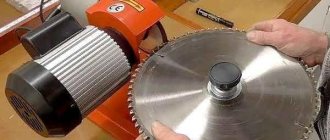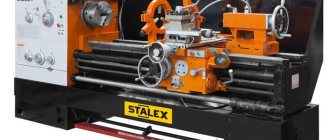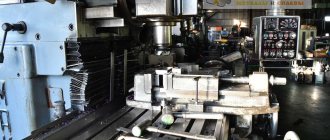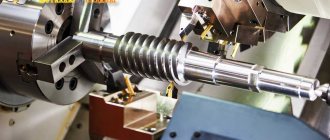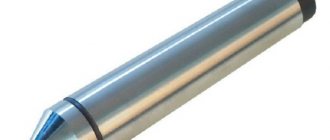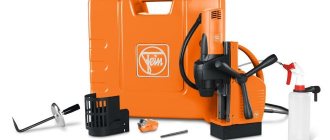To this end, Quaker Chemical Corp. conducted a series of end machining tests on aluminum workpieces to evaluate the effects of different cutting fluids on cutting power and cutting tool wear. When machining with a new cutting tool, the coolant had no effect on the machining forces generated at the same cutting speed. However, the more the tool processed the workpiece, the greater the difference in power required to effectively machine using different coolants.
These results show the following
The influence of metal fluid on cutting power is minimal when using new cutting tools. Thus, the difference between the effect of two different coolants on cutting power may not be noticeable until the cutting edges of the tool begin to wear.
The increase in power when milling aluminum is a direct result of cutting edge wear. The rate of this wear is directly affected by both the cutting speed and the metal cutting fluid used. The relationship between these variables is linear (cutting speed, cutting edge wear and cutting power all increase together). Armed with this knowledge, manufacturers can potentially predict the condition of the cutting edge at any point in the milling process, as well as the required power at other, untested cutting speeds.
Types and applications of cutting fluids
During the metalworking process, there is always strong friction between the workpiece and the tool. This is especially important for lathes, where the cutter gets very hot. Intense friction also causes premature tool wear for cold plastic deformation, especially for operations such as high-speed multi-position heading or cold extrusion. In all these cases, it is necessary to use special cutting fluids.
Using water-based coolant for milling
One of the latest domestic developments in the field of cutting fluids is the water-soluble universal coolant EFELE CF-621. Despite the fact that this coolant is synthetic, it has a minimal cost, typical for mineral products. EFELE CF-621 is designed for cutting operations on metals such as steel, including stainless and alloy, cast iron, titanium, aluminum and copper alloys. This coolant is available in the form of a concentrate. It has an amber color and a pleasant caramel smell, does not contain formaldehyde, chlorine and secondary amines, therefore it has no harmful effects on health. Made from synthetic components with the addition (up to 15%) of a composition of mineral oils, EFELE CF-621 coolant has good biostability and high performance properties. This allows metal processing to be carried out at a lower solution concentration.
Getting into the laboratory
Testing focused primarily on two types of cutting fluids: microemulsion and macroemulsion, each diluted at a concentration of 5% in water. The main difference between the two is the size of the suspended oil droplets. Macroemulsion contains particles with a diameter of more than 0.4 microns, which give an opaque white appearance to the coolant. Microemulsion has a smaller particle diameter and has a translucent appearance.
The experiment was carried out on a Bridgeport GX-710 three-axis CNC machine. The blank was a block of 319-T6 aluminum alloy, 203.2 by 228.6 mm by 38.1 mm, cast, containing copper (Cu), magnesium (Mg), zinc (Zn), and silicon (Si). Machining was carried out with an 18 mm diameter end mill with eight inserts with 15-degree rake angles and 1.2 mm radii. It machined with an axial depth of 2 mm and a radial depth of 50.8 mm. Each coolant composition was applied to the cutting zone for 28 milling passes at two different cutting speeds, 6,096 rpm (1,460 m/min) and 8,128 rpm (1,946 m/min), to remove 1,321.6 material cm3. Feed rates at both speeds were 0.5 mm per revolution (0.0625 mm per insert per revolution).
Coolant for copper/wire drawing
When working with copper wire, emulsions of different compositions are used, in accordance with the stage of the work. The initial stage will be rough drawing, in this case, the first step is to use an oil-based composition. It will optimally cool the product and give the primary processing the desired properties.
The second step is to use exclusively coolant for wet wire drawing, in the form of an aqueous emulsion. This is a finishing version of processing, and the final stage of part formation.
Speed, wear and power
Power measurements for this study during processing were obtained using an instrumented monitoring and adaptive control system. The test results are shown in the charts in this article. As expected, higher cutting speeds resulted in higher machining speeds. However, as described above, the differences in cutting power between the two fluids were minimal when machining with the new cutters.
At the beginning of the process, the workpiece material properties and cutting edge geometry are the dominant factors affecting cutting power. Differences between the performance characteristics of the metal environment arose only after the geometry of the cutting edge changed during wear. The choice of metalworking fluid directly affected the rate at which this wear occurred, and therefore the cutting power required at any given point in the milling operation.
Assuming a certain baseline level of performance for the two fluids being compared, tests should be performed until the cutting inserts begin to wear to determine which coolant allows higher cutting speeds to be maintained for a longer period of time.
The plots made it possible to say that the rate of increase in power can be used to predict the condition of the insert at any given point in the milling operation. Likewise, power measurements taken at several cutting speeds can be used to obtain the required power at other, untested cutting speeds.
Coolant for stainless steel
Working with stainless steel also requires additional use of coolant. It is recommended to use an emulsion with so-called anti-seize additives, this will improve the quality of processing and the output surface of the part as a whole.
Oily liquids usually have these properties. In order to determine for yourself one lubricant from many similar models, follow the general tips:
- Lack of chlorine.
- Availability of high lubricating properties.
- A more transparent liquid for a better view of the working surface being viewed.
- Safety for workers, no oil mist.
These are the main recommendations that you should follow when choosing coolant for stainless steel.
Proof
While the x-axis in Figure 1 consists of raw material removal volume data, Figure 2 uses the natural logarithm of this variable. Plotting the volume of material removed in this manner results in a slope, which represents the exact rate at which power increases with subsequent processing. This measurable measure is necessary to predict tool wear and cutting performance at different cutting speeds. However, these data only indicate that cutting power and material removal volume increase together. Confirmation of insert wear is especially important since the driving force behind the power increase requires additional testing (specifically, to correlate the slopes of the lines in Figure 2 directly with insert wear that occurs during processing).
These tests added two additional cutting fluids: another macroemulsion and another microemulsion. Each of the four fluids was applied at a cutting speed of 1.946 m/min. until 660 cm3 of material was removed. This provided sufficient time for abrasive wear and, in some cases, metal-to-metal adhesion to occur. Flange wear measurements were then taken for the four fluids with respect to a parameter relating cutting power to metal slot volume (specifically, the slope of power compared to the natural volume of metal removed). As shown in Figure 3, this confirmed the linear relationship between insert wear and increased cutting power during machining.
Coolant classification
Each technological process requires a coolant, the properties of which will best meet the specifics of the material and the characteristics of the machine. Typically, metalworking production uses several types of metalworking coolants:
- oil coolant.
Its base is mineral or synthetic oil. To obtain special properties of the liquid, additives are added to the composition. Such coolants perfectly lubricate surfaces, but do not reduce temperatures well, so they are used for soft metals for simple work.
- water-miscible coolant
– these liquids may contain alcohols, emulsifiers, oils, electrolytes, additives, etc. They cool tools and metals well, but have modest lubricating characteristics,
- mineral coolant
– produced from petroleum products, used primarily for the operation of milling and lathes for cutting steel,
- synthetic and semi-synthetic coolant
– these types of cutting fluids are made on the basis of a mixture of water-soluble half-mirs with the addition of surfactants, inhibitors, biocides, etc.
- emulsion coolant
– compositions with a higher concentration of dispersed components compared to water-miscible ones. Such fluids have excellent lubricating and anti-wear characteristics.
In addition to composition, cutting fluids can be classified according to other criteria, for example:
- According to the method of preparation or composition of the working fluid, a distinction is made between emulsols - ready-made liquids that contain additives that prevent separation - and coolant concentrates, mixed with water before use to obtain coolant emulsions,
- oil coolants can vary in viscosity, flash point, acid number, etc.
Other findings
While the test results cannot necessarily be extrapolated beyond aluminum milling, the study shows that microemulsion performs better if the goal is to machine at the fastest possible speed. This is because a denser microemulsion with smaller diameter oil droplets tends to remove heat more efficiently than a macroemulsion and its relatively larger droplets. However, operations involving slower cutting speeds may promote macroemulsion and its comparatively greater lubricity.
Whatever the part, the best way to find the right coolant is to try different formulations in action. Understanding the relationships between cutting speed, tool wear and cutting power, and how metalworking coolants can influence these factors, is critical to making the right choice.
Preparation, storage and disposal of cutting fluids
In Russia, both coolant concentrate and components for its preparation are produced for the conditions of a particular enterprise. Before being used for metalworking, they undergo the following procedures:
- Mixing the components at the required temperatures (at 60 - 110 ° C, which is determined by brand and composition).
- Sampling for compliance analysis (for Russia GOST 2517-80 applies).
- Storage in specialized containers that allow periodic stirring, heating, etc.
- Filling into devices and devices for continuous supply.
In preparation for coolant, additives can be added. For this purpose, vibration installations for fine emulsification are often installed at Russian enterprise sites.
Over time, the compositions in question become contaminated, so various systems are provided to clean the coolant from residual chips, adhering metal, etc. Used products, the effective cleaning of which is no longer possible, are disposed of.
Video on how to weld cutting fluid with your own hands
Lubricant for drilling stainless steel
The drilling operation also requires the application of a cooling lubricant. This is done more to preserve the instrument. In the process of continuously drilling a hole in metals of a strong composition, the drill often begins to overheat and subsequently become dull.
There are two known ways to solve this issue - periodic stops, during which the drill will cool, or the use of an emulsion for cooling. As a rule, the second option is preferable; it will save time and money on a new drill. To do this, use an oil-based lubricant for drilling stainless steel; as a home equivalent, it is fair to use regular machine oil.
After drilling a hole a little, add oil to it, or periodically lubricate the drill with the product using a brush.
Emulsol for paving slabs
In this case, the lubricant serves to facilitate the process of creating tiles. A special form is lubricated with an emulsion, then a concrete solution is poured into it. After drying, the product is easily and simply removed from the mold due to the fact that the mold has been lubricated, this significantly speeds up the work process.
The following compounds can be used as lubricants: KSF-1, Nometal, AGAT-B9, Separen.
But no one cancels the use of improvised means, in the form of machine oil or soap solution. With their help, you can also prepare an emulsol for paving slabs with your own hands.


